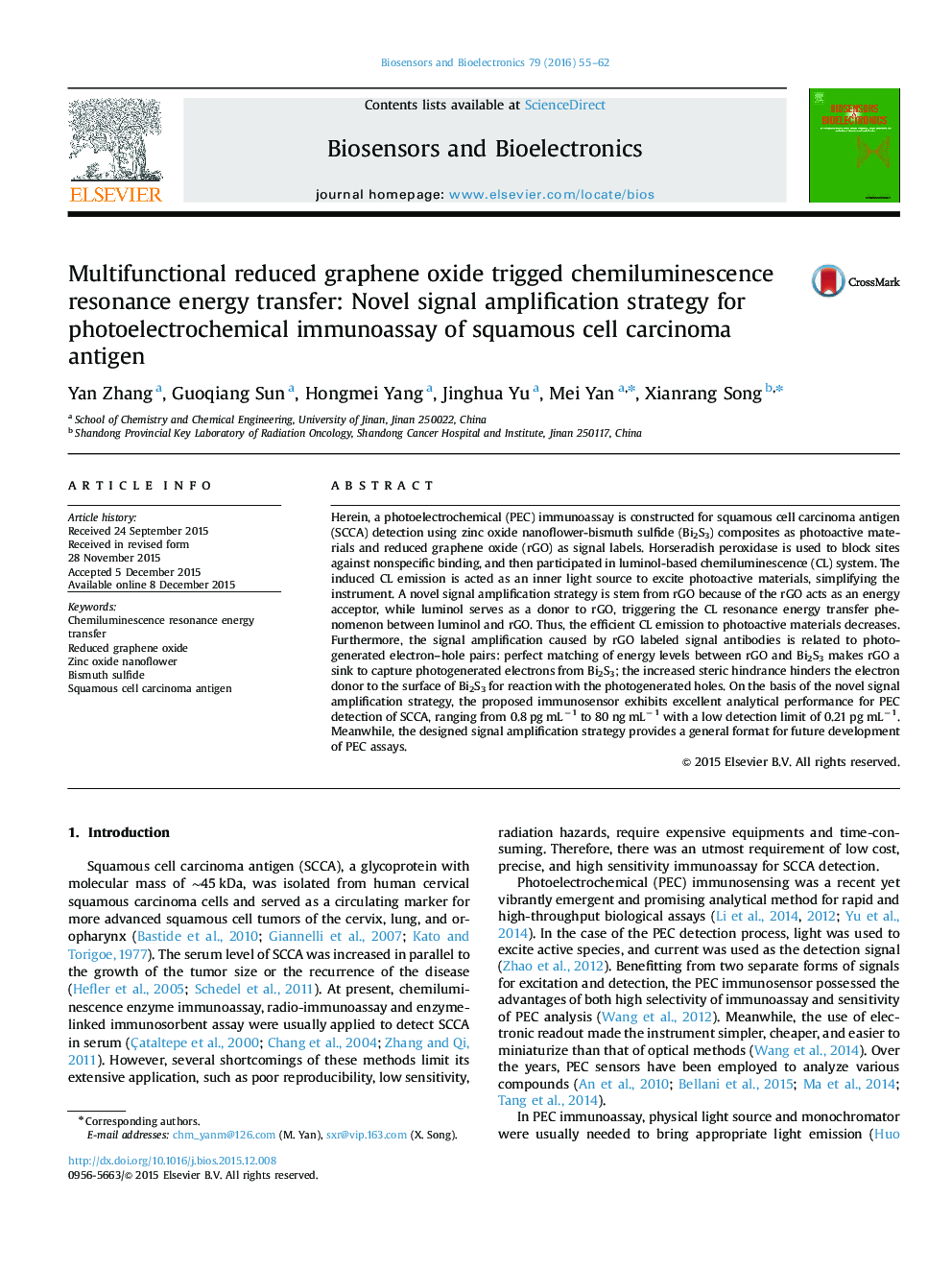| Article ID | Journal | Published Year | Pages | File Type |
|---|---|---|---|---|
| 7230797 | Biosensors and Bioelectronics | 2016 | 8 Pages |
Abstract
Herein, a photoelectrochemical (PEC) immunoassay is constructed for squamous cell carcinoma antigen (SCCA) detection using zinc oxide nanoflower-bismuth sulfide (Bi2S3) composites as photoactive materials and reduced graphene oxide (rGO) as signal labels. Horseradish peroxidase is used to block sites against nonspecific binding, and then participated in luminol-based chemiluminescence (CL) system. The induced CL emission is acted as an inner light source to excite photoactive materials, simplifying the instrument. A novel signal amplification strategy is stem from rGO because of the rGO acts as an energy acceptor, while luminol serves as a donor to rGO, triggering the CL resonance energy transfer phenomenon between luminol and rGO. Thus, the efficient CL emission to photoactive materials decreases. Furthermore, the signal amplification caused by rGO labeled signal antibodies is related to photogenerated electron-hole pairs: perfect matching of energy levels between rGO and Bi2S3 makes rGO a sink to capture photogenerated electrons from Bi2S3; the increased steric hindrance hinders the electron donor to the surface of Bi2S3 for reaction with the photogenerated holes. On the basis of the novel signal amplification strategy, the proposed immunosensor exhibits excellent analytical performance for PEC detection of SCCA, ranging from 0.8 pg mLâ1 to 80 ng mLâ1 with a low detection limit of 0.21 pg mLâ1. Meanwhile, the designed signal amplification strategy provides a general format for future development of PEC assays.
Keywords
Related Topics
Physical Sciences and Engineering
Chemistry
Analytical Chemistry
Authors
Yan Zhang, Guoqiang Sun, Hongmei Yang, Jinghua Yu, Mei Yan, Xianrang Song,
